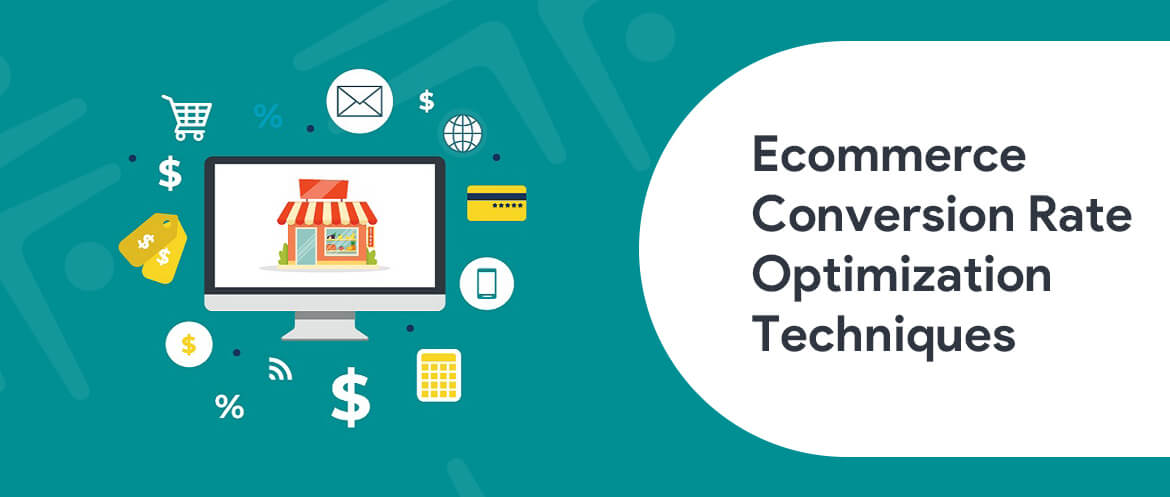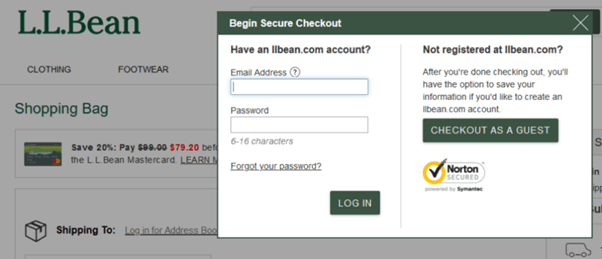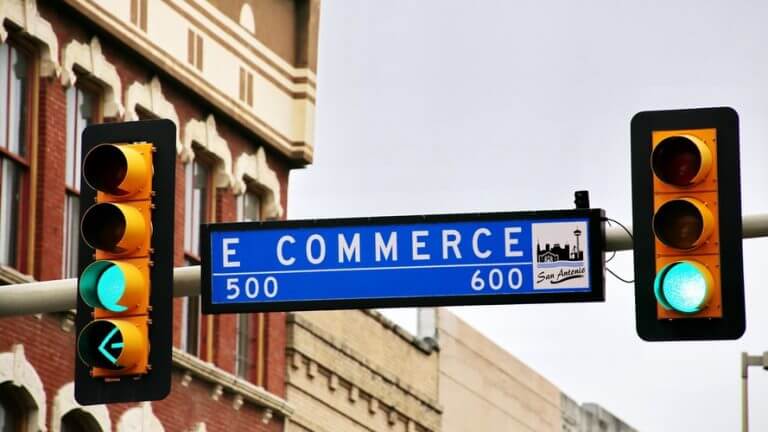Want a heads up when a new story drops? Subscribe here.
Running a striving e-commerce business isn’t an easy task. In order to successfully lunch and grow your brand, you need a solid strategy.
You might have shortlisted your inventory, partnered up with the right suppliers, selected the web design of your e-commerce website, you might have even set your paid ad camping, but your journey just begins.
In today’s increasingly competitive e-commerce world, where new sites launch on a daily basis, it’s become a challenge to keep your visitors engaged at your site. Studies show that more than 90% of prospective customers leave an online store without having purchased anything. This kind of stats might sound quite alarming to an e-commerce owner, but let’s face it: you need to optimize your website for conversions.

Table of Contents
What’s E-Commerce CRO?
CRO (Conversion Rate Optimization) is a strategic process that focuses on increasing your site vistiors’ engagement rates. A successful conversion rate optimization strategy would translate in more newsletter sign-ups, higher number of content downloads and flourishing sale rates.
As it comes to e-commerce websites people think that the CRO technique should focus on product pages only. Nevertheless, we believe in taking a more integrative approach where checkout pages, blog & FAQ pages, as well as other internal pages are also taken into account and adapted to boost site vistor’s engagement.
Why Is e-commerce CRO Important?
Are you still wondering why you should invest in CRO? Here is a list of the top 4 reasons why you should move the CRO steps to the top of your marketing plan:
Growing Sales
E-commerce websites are all about generating sales, so CRO is exactly the strategy you need to boost your site performance in terms of ROI.
Conversion rate optimization improves shopping experience and naturally this translates in increased customer satisfaction and higher engagement with the site, respectfully – higher number of purchases made.
Increased Savings
As compared to paid advertising campaigns on Google and Social Media, the CRO process does not require additional investment. Often CRO involves web design and development tweaks, as well as specific content improvements. As long as you have such specialists in-house you’d be able to minimize your CRO budget to a minimum.
Better Understanding of Your Customers
In order to optimize conversion rates you need to start paying closer attention to your site visitors and to their actual needs and preferences. Conducting a variety of A/B or Multivariate testing should be an on-going exercise for you in your attempt to optimize for user’s clicks.
Once you are well-aware of how your target audience thinks and reacts to certain stimuli you’d be more equipped not only to improve your conversion campaign but also to optimize a number of aspects of your online marketing strategy.
Boost in Google Rankings
Smooth user experience is highly appreciated by Google. Conversion optimizations could increase your dwell time on the site; they could minimize your site’s bounce rate and those are all metrics monitored by Google. By optimizing your site for conversions you are also increasing your chances to rank high in Google and that’s something worth keeping in mind.
5 Key CRO Techniques to Boost your Site Conversions
But how are you to actually optimize your site for conversions? Below follow the five CRO methods that can instantly boost your e-commerce site conversion rates:
Add а Site Seal
Few are the e-commerce websites that are as popular as EBay or Walmart. So you have to pay attention to all those little things that would make a difference, like for instance e-commerce website site seals. Those are highly effective tools that you can consider.
For instance, the Norton Site seal powered by Digicert with a respected SSL/TLS certificate works as a visual indicator that your company website takes security and privacy seriously.
The site seal offered by CA (Certificate Authorities) helps brands build trust by communicating to their site visitors that their browsing sessions are secured by SSL connection.
It would be great if you go for the champion of all site seals, namely “Norton Secured”. It is well-recognized and trusted site seal by online users and it will definitely help you build trust in the eyes of your audience.
Don’t Force Your Site Visitors to Create an Account
Nowadays, the majority of e-commerce sites offer a seamless user experience. If you wish to remain competitive in your market, it’s highly recommended to offer a guest checkout.
For instance, Baymard Institute’s study shows that about 31% of users abandon their cart within the checkout process as customers don’t want to walk through the tedious process of creating an account from scratch.

Think about it: if you do not account for your site visitor’s specific preferences, then someone else will, right? Many e-commerce websites offer guest checkout options that are easily implemented via simple plugin integration.
For instance, Magento provides guest checkout by default:

Consider taking your site visitors directly through your guest checkout process instead of asking them to log in or create an account. Of course, keep the link to the login page at a click distance and at plain sight (usually at the top of your pages page) so that they could sign in, in case that’s what they prefer.
But save them the time and efforts towards making a purchase. Make it easier for them to give you their money and your conversions will grow!
Fast Shipping
Nowadays, most e-commerce websites offer same day or next day delivery. For instance, getting your order delivered within the same day or a couple of days later isn’t a revolutionary approach. Nevertheless, fast shipping is a serious competitive advantage that you should definitely explore.
Back in the days a delivery period of three to seven days was considered the norm, but that no longer sounds tempting to impatient online users. Fortunately, small businesses are quite capable to appease the fast delivery demand.
For instance a two-day delivery period to ship your products throughout the US via air mail would really make your company stand out. Try to optimize your shipping time for it definitely affects your onsite conversion rates!
Live Chat Support
In today’s e-commerce driven world, live chats play a significant role in lead conversions. Sites with live chat support can enjoy up to 73% higher customer satisfaction rates as compared to their competitors that don’t offer this real-time service.
Being able to attend to each and every question and concern your site visitors may have makes them feel comfortable with your brand. They start trusting your company and team and are more inclined to choose you above the rest of the competition.
Instant live chat solutions save time and help convert your potential customers.
Shopping Cart Recovery
Shopping cart recovery is a wise conversion booster that you should not overlook. It is a good solution to the cart abandonment issue that we’ve discussed earlier. Yes, there is a great chance that your site visitors will like products from your portfolio. They will even add them to their carts. But then they’ll leave – at least some of them will.
Well, we could start regretting it, of course, but it would be much wiser to strategize your next move instead. What if that site visitor that you thought you’ve lost revisits your site? What do you think they’d prefer – to greet them as an old acquaintance or as a new site visitor?
Always remember that the personalization in your communication with your target audience makes all the difference. The shopping cart recovery feature will remind your returning visitors what they most liked about your site. Maybe this time they are more determined to make a purchase, why not “fill their cart for them” with their favourite products. Well, not resetting it since their last visit is more like it, but the result is the same: your returning visitors are once again facing the temptation of cashing in on their wishlist. Will they resist the temptation?
One thing is for sure, the shopping cart recovery tactic will drastically increase your onsite conversions.
There are 2 ways that you can approach the shopping cart recovery strategy:
Abandoned Cart Retargeting
Retargeting ads are a powerful tool to account for cart abandonment. Reminding your site visitors that they have “unfinished business” on your site could make them come back and see that their selected products are still waiting for them in their virtual shopping cart.
You need simply to insert ad pixels on your checkout page and you’d be able to remarket it to users on Google and Facebook. You can take advantage of this retargeting method even if the user doesn’t provide you with an email address. How great is that?
Abandoned Cart Email
Suppose your site visitor has filled in their email address at checkout, but then he changed his mind and left your website without making purchase. You should recognize that you are offered an excellent opportunity to try to convert that lead with a follow-up email, reminding them that their selected products are still waiting for them in their shopping cart at your site.
You can offer them a special coupon code or limited discount to encourage them to finalize their purchasing process.
Wrapping Up
You’ve already learned some of the essential CRO methods that will help you make your e-commerce site a striving one. Being aware of how your site visitors engage and interact with your website is really essential when optimizing your site’s conversion rates. And while we listed great insights that can get you started with conversion optimization you need to keep in mind that good UX, quickly loading product pages, amazing visuals and engaging content are areas that you should also pay close attention to.
Experiment and see which of the above-listed tactics move the needle for you. We’d appreciate it if you decide to share our experience or questions with us in the comments below.










